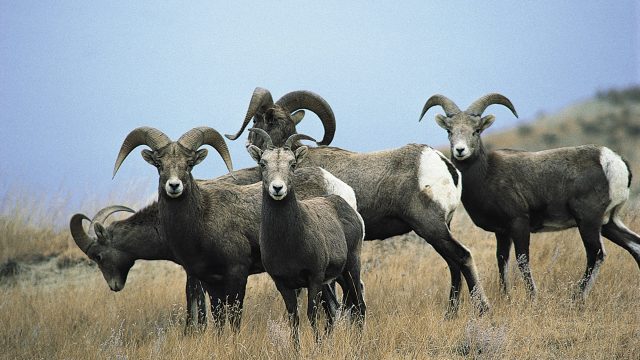Doug Leier: North Dakota's Bighorn Sheep Population Doing Well

In terms of sheer hunter interest and popularity, the question of, “How’d the deer and pheasants make it through the winter?” is asked more often than, “What’s the latest on the bighorn sheep population?”
It’s not because people don’t care about bighorn sheep. On the contrary, you’ll find interest from hunters, and citizens young and old alike when it comes to the niche population of bighorn sheep North Dakota supports. For instance, each year around 8,000 to 9,000 residents apply for less than a handful of bighorn sheep licenses, with odds of success typically about one in 2,000.
In 2014 the North Dakota Game and Fish Department allowed for five bighorn sheep tags, one more than 2013. It’s the state’s most limited big game hunt. The application period for bighorn, as well as moose and elk licenses, has come and gone, and the lucky hunters who drew a license for this year will find out soon.
While the jury is still out on how pheasants and deer fared over the winter, we do know bighorn sheep did quite well, as the Game and Fish Department’s spring survey indicated a minimum of 293 bighorns in western North Dakota, virtually unchanged from the 2013 count of 297.
In total the count was 85 rams, 159 ewes and 49 lambs. Not included are 24 bighorn sheep introduced from Alberta in February, and approximately 30 bighorns that live primarily in the North Unit of Theodore Roosevelt National Park.
Big game biologist Brett Wiedmann said the count in the northern badlands was the highest on record, beating the previous record set in 2012, but the southern badlands population declined 15 percent.
“Rams and lambs showed a slight decline, but adult ewes increased,” Wiedmann said. “About 75 percent of lambs counted during last summer’s survey survived the winter, which is about average, but the recruitment rate of 37 percent was above average.”
Game and Fish Department biologists count and classify all bighorn sheep in late summer, and then recount lambs the following March, as they approach one year of age, to determine recruitment.
Wiedmann is encouraged by another year of healthy numbers of lambs because it is indicative of a healthy population. “Adult mortality was also low last winter, so we expect another good crop of lambs,” he said.
When will we know how the deer and pheasants made it through the winter?
For mule deer, the results are in and the spring population index is up about 19 percent from last year.
Spring pheasant crowing counts are just beginning and will run for several weeks.
In much of the state, there wasn’t enough snow for Game and Fish biologists to conduct their winter aerial survey for white-tailed deer. This survey requires good snow cover so deer are readily visible from the air.
We all know that winter has a significant influence on resident wildlife populations. For bighorn sheep, we know that they held their own.




